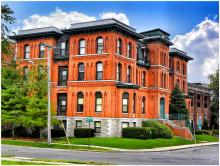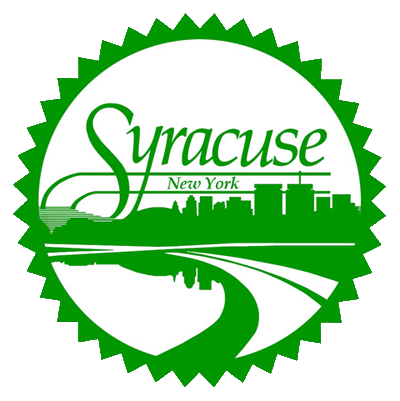
Fast, affordable Internet access for all.

City officials in Syracuse, New York have formally approved a new project to provide heavily discounted wireless broadband to low-income city residents. The plan is being made possible courtesy of the $1.9 trillion American Rescue Plan Act (ARPA), $123 million of which has been doled out to Syracuse city leaders for various urban improvement efforts.
After issuing a request for proposals (RFP) last year, Syracuse officials say they’ve selected Community Broadband Networks FLX to help build the fledgling, city-owned network. City officials say the finished project, which is estimated to be completed by the end of the summer, should cover 10 Census tracts in the south, southwest and west sides of the city for a total project cost of somewhere around $3.5 million.
Once completed, the network should provide wireless broadband service at speeds up to 100 megabits per second (Mbps) to roughly 2,500 Syracuse residents currently living below the poverty line in a city of 146,000.

On Monday, March 27 the Syracuse Common Council voted to formally approve the project, which will utilize fixed wireless technology in a bid to reduce overall project costs. Participating users will be given a free router and modem, which in turn will connect to city transmitters affixed to local city-owned buildings and utility poles.
City officials say they hope to charge a fixed rate of around $40 per month for service. The lion’s share of those costs will be supplemented by the Affordable Connectivity Program (ACP), which provides eligible low-income residents a $30 discount off of the cost of broadband access ($75 in tribal areas), and a one-time $100 subsidy to help pay for an Internet-connected device.
To qualify for Syracuse’s looming program, city officials say residents can earn up to 200% of the federal poverty level—or roughly $29,000 for a single resident, $39,000 for a two person household, or $60,000 for a family of four.
Once installed, the city says it will develop a sustainability plan for maintaining the service after federal ARPA funding runs out and ACP funds are depleted should Congress not appropriate more funds to maintain the program. ILSR analysis currently estimates the program will run out of funding sometime around March of 2025 at current enrollment rates. However, ACP funds could run out as early as next summer, as the White House has launched a nation-wide push to boost enrollment rates which we recently reported on here.
City officials say they’re pursuing a range of funding options for potential future efforts to bridge the digital divide in the city, including Broadband Equity, Access, and Deployment (BEAD) grant funds administered through New York State’s ConnectALL initiative.
Under the city’s proposal, Community Broadband Networks—which currently serves portions of Ontario, Seneca and Wayne counties in New York—will build the network, verify user income qualifications, and provide customer support.
Regional Monopolies Aren’t Getting it Done
Like so many U.S. communities, Syracuse broadband access is largely dominated by local cable broadband monopolies and regional phone companies that haven’t been keen on updating dated DSL lines to future-proof fiber optics.
Verizon, the city’s incumbent telco, has inconsistently upgraded its dated DSL technology to fiber, leaving large swaths of New York State stuck on sluggish, last-generation technology.

In 2010, the company froze expansion of its FiOS fiber network, leaving numerous upstate New York cities with either patchy fiber access—or none at all. For much of the last decade Syracuse, Binghamton, Buffalo, and Albany officials have begged the company to expand access to fiber optic broadband — with mixed results.
The remainder of Syracuse is heavily dominated by Charter Communications (Spectrum), which acquired the assets of Time Warner Cable in a blockbuster 2016 megadeal. Charter is consistently among the lowest ranked companies in America in terms of customer satisfaction, and was almost kicked out of New York State after the company repeatedly failed to meet broadband deployment conditions affixed to the 2016 merger.
“We have more demand than I think exists today,” Jennifer Tifft, director of strategic initiatives for Syracuse, proclaimed at a Common Council committee meeting earlier this month. “For the service providers, we just don't have enough options to meet the needs that exist in the community. And so this is about creating options, affordable options.”
City data indicates that roughly one in four city households lack access to broadband, due to either lack of access or affordability. City officials say those numbers are worse in the targeted low-income areas, where up to 40 percent of residents lack broadband access.
Data from organizations like the Open Technology Institute indicates these coverage and affordability gaps are most pointedly felt by minority, low income, and otherwise marginalized urban communities. Regional monopolies have a long history of refusing to upgrade lower income and minority communities as part of a process dubbed redlining, or what the Federal Communications Commission (FCC) calls digital discrimination.
Incumbent providers generally deny that they refuse to upgrade or repair minority and marginalized neighborhoods, but groups like the National Digital Inclusion Alliance (NDIA) have routinely collected data in cities from Cleveland to Detroit they say speaks for itself.
Another recent joint study by The Markup and the Associated Press found that not only do regional monopolies tend to upgrade or repair low-income and minority neighborhoods at a slower pace than more affluent areas, but also charge low-income communities often significantly more money for access.
Syracuse currently has a 31 percent poverty rate. In some of the census blocks being targeted by the program, per-capita income is less than $10,000. As a result, high broadband rates driven by monopolization and muted competition have left many low income city residents cut off from essential education, employment, and health care opportunities.

Syracuse’s initial low-income broadband pilot project is part of a broader smart city growth strategy dubbed “Syracuse Surge.” First unveiled in 2019, the project aims to shore up mass transit, improve municipal technology access, and revitalize Central Tech—a new city high school focused on science, technology, and engineering.
“We’re taking the long view here," Walsh said at the time. “As we’re going into the Fourth Industrial Revolution – that is going to be based on connectivity and the Internet of things – we’re making a technology infrastructure investment that puts us ahead of every other city in the country in advancing those technologies. It puts us in a once-in-a-generation position to surge ahead to not only compete in the Fourth Industrial Revolution, but to thrive in it.”
Header image courtesy of Flickr user Bill Badzo, Attribution-NonCommercial-ShareAlike 2.0 Generic (CC BY-NC-SA 2.0)
